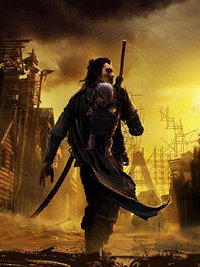From the coastal regions west of the Silver
coast all the way north to the edge of the Anansis River’s southern shores and
Mt. Gol is a vast an untamed land identified as Vothrace. While most look to
the nomads of Vothrace as a single culture of barbaric tribesmen who revere
primitive spirits and and ancestors, the truth is more complex. Vothrace
contains the remnants of two once great kingdoms: Thassar, which dominated much
of the south for centuries before falling to Anansic invasions, and Astumar,
which fell five centuries ago to a plague which decimated the people of the
kingdom and left the cities and castles of a once thriving land entirely
barren; only a handful of survivors who fled the cities survived, and to this day
the ruins of old Astumar are regarded as dangerous, plague-tainted remnants of
a bygone era.
The kingdom of Thassar is detailed in its
history along the Silver Coast, but it’s old territories included much of
southern Vothrace.
Astumar, according to legend, held strong as a
regional contender against the early Anansic invasions, and may have thrived
but for the plague which wiped out the land, at least until the last century
and a half when the great rivers which poured out of the western mountains dried
up; the draught hit the nomads of the region hard, and would surely have ended
Astumar had it survived to the present.
The nomads of Vothrace today are a mixture of
clans with histories dating back to old Thassar settlements, Astumari
descendant and Anansic settlers. There is some Galitath and even a bit of
Mesutin in their language as well, suggesting a real mixing pot of relations.
Unlike many other nomadic groups in the Anansis
region, the Vathrace have retained a fairly sophisticated culture and language,
and pass this down from one generation to the next. A very ritualized process
of ancestor worship has grown up among the Vothrace, as well as a heavy
reliance on spirits from the Outland as a source of their divine lore and
understanding. Priests in Vothace pay equal reverence to the spirits and
ancestral ghosts, and often wear physical ornamentation of old ancestors; the
very skin and bone of an ancestor may turn into a priestly vestment, and the
heads of old relatives of great import (especially if they knew magic) are
decorated slavishly with gold, silver and jewels an imbued with powerful
divination magic to serve as oracles for the clan.
Spirit priests of the Vothrace are effectively
shamans. They revere the spirits as perfect beings which exist outside of the
mortal realm of creation, entities which will speak truth when the so called
“gods” won’t. The Vothrace do not revere the Enkanneth or Primordials, and some
occult scholars of the clans contend that the only real truth lies in the cosmic
power of the Old Ones, which they say will inevitably destroy all of the world
in its desire for consumption.
Vothrace clans are always on the move, and they
have dozens of “meeting grounds” where several clans can converge each year for
trade and commerce. Some Vothrace range as far as Galitath and Anansis, parking
outside friendly cities and towns for trade and commerce. Not all Vothrace are
welcome in all locations, however; the habit of wearing the skin and bones of
dead relatives is considered highly taboo among Anansics who are very
superstitious of the undead and see ancestor worship as bordering on dark
necromancy. Curiously the fortress-city
of Thassar, last bastion of the old empire, welcomes all clans of Vothrace to
its gates.


No comments:
Post a Comment